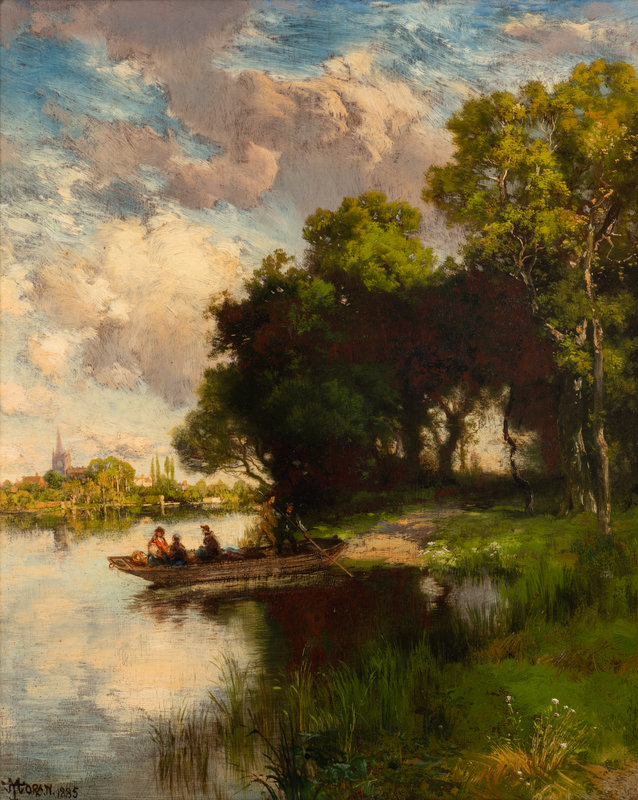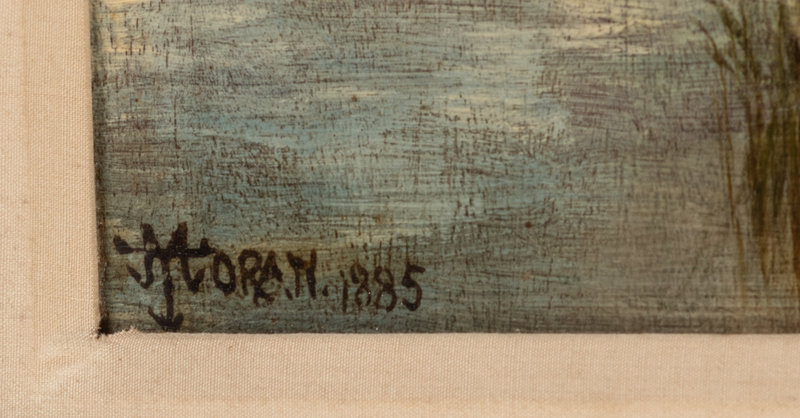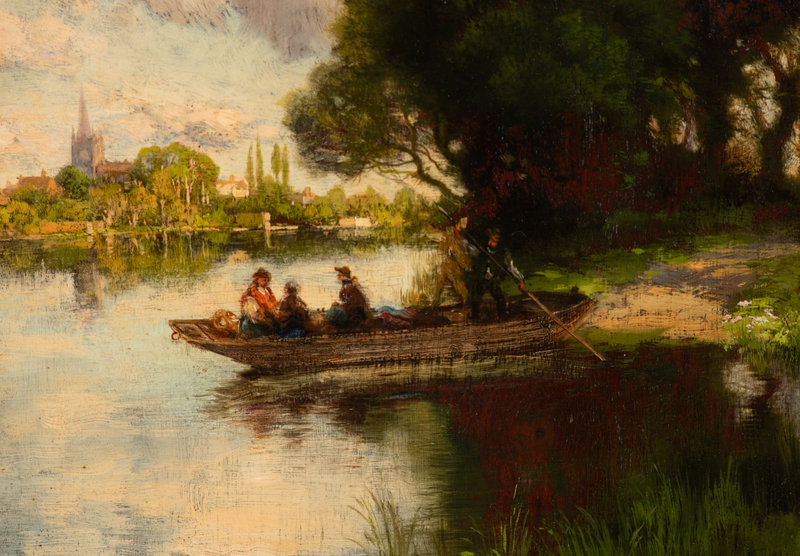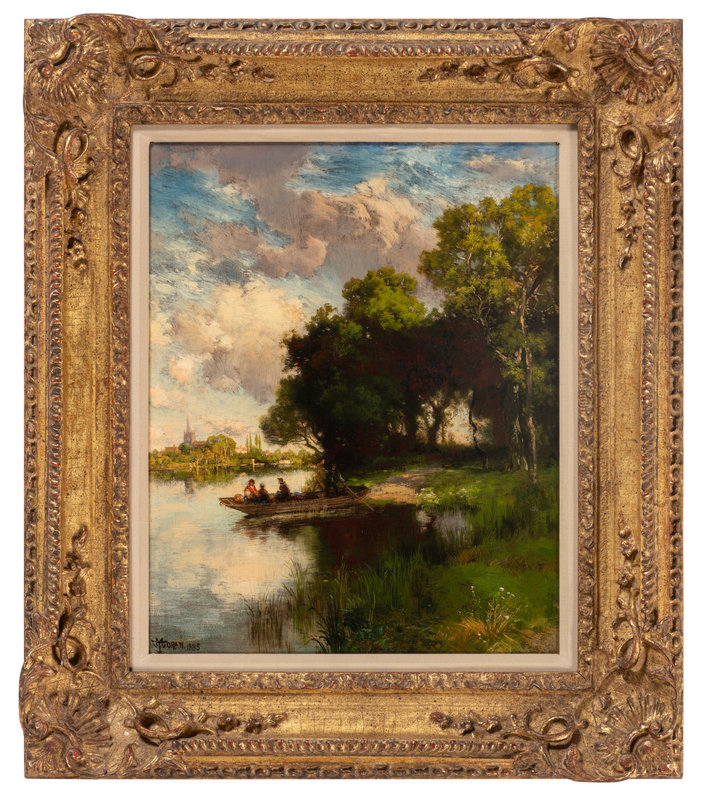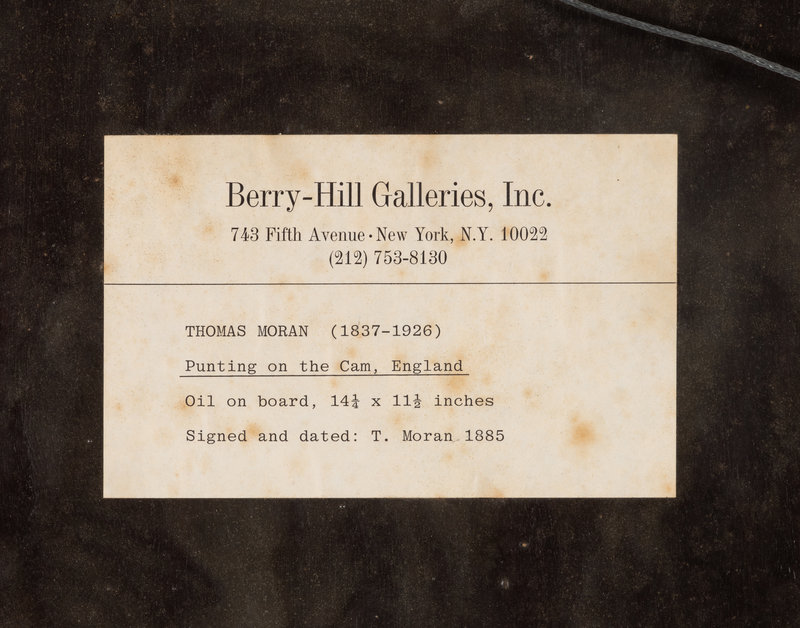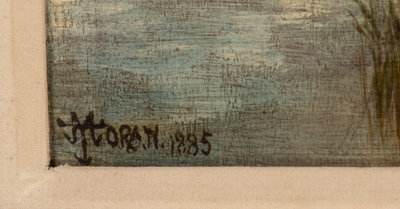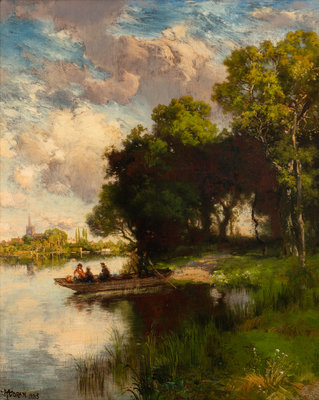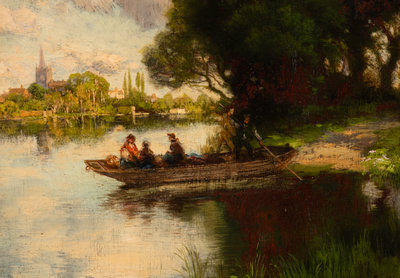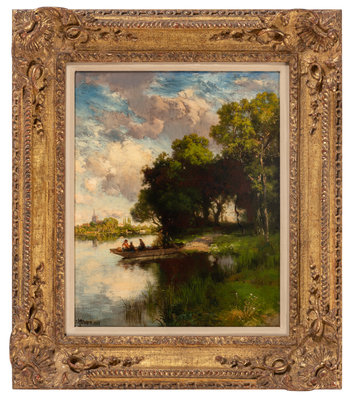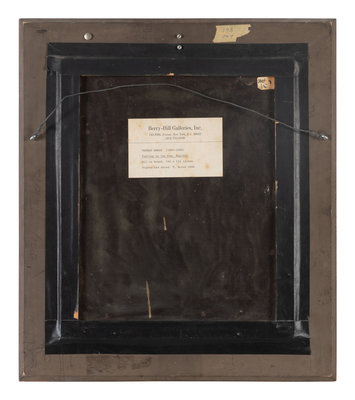Condition Report
Contact Information
Auction Specialists
Lot 49
Thomas Moran
(American, 1837-1926)
Punting on the River Cam, England, 1885
Sale 1283 - Canvas & Clay: The Collection of Judith and Philip Sieg, Bellefonte, Pennsylvania
Oct 26, 2023
10:00AM ET
Live / New York
Own a similar item?
Estimate
$30,000 -
50,000
Price Realized
$22,680
Sold prices are inclusive of Buyer’s Premium
Lot Description
Thomas Moran
signed TMoran and dated (lower left)
14 3/8 x 11 1/2 inches.
The Collection of Philip and Judith Sieg, Bellefonte, Pennsylvania
(American, 1837-1926)
Punting on the River Cam, England, 1885
oil on board
signed TMoran and dated (lower left)
14 3/8 x 11 1/2 inches.
The Collection of Philip and Judith Sieg, Bellefonte, Pennsylvania
